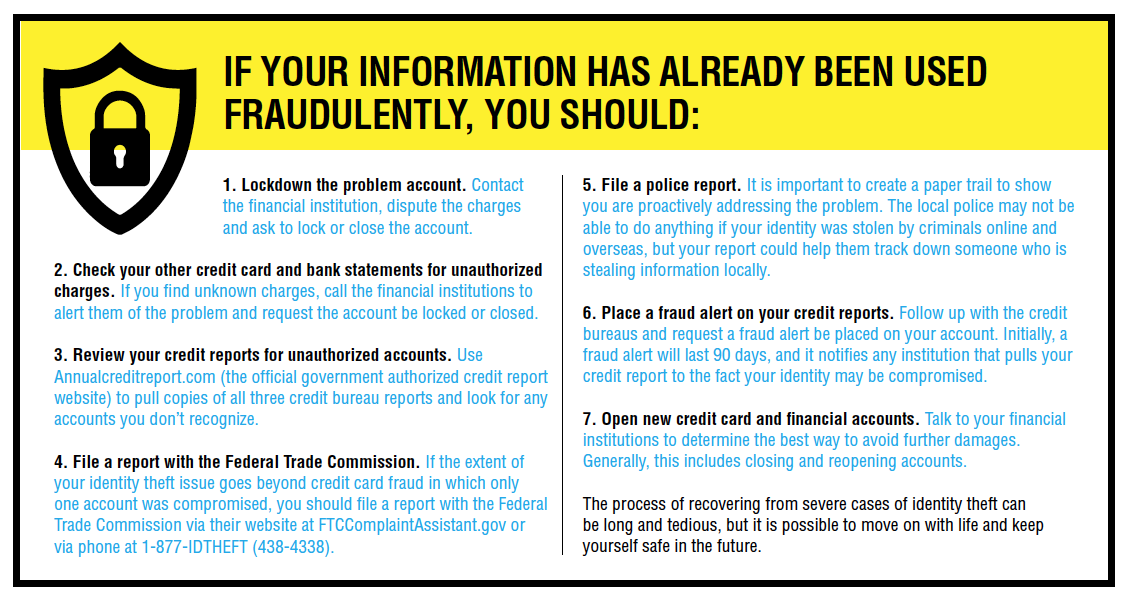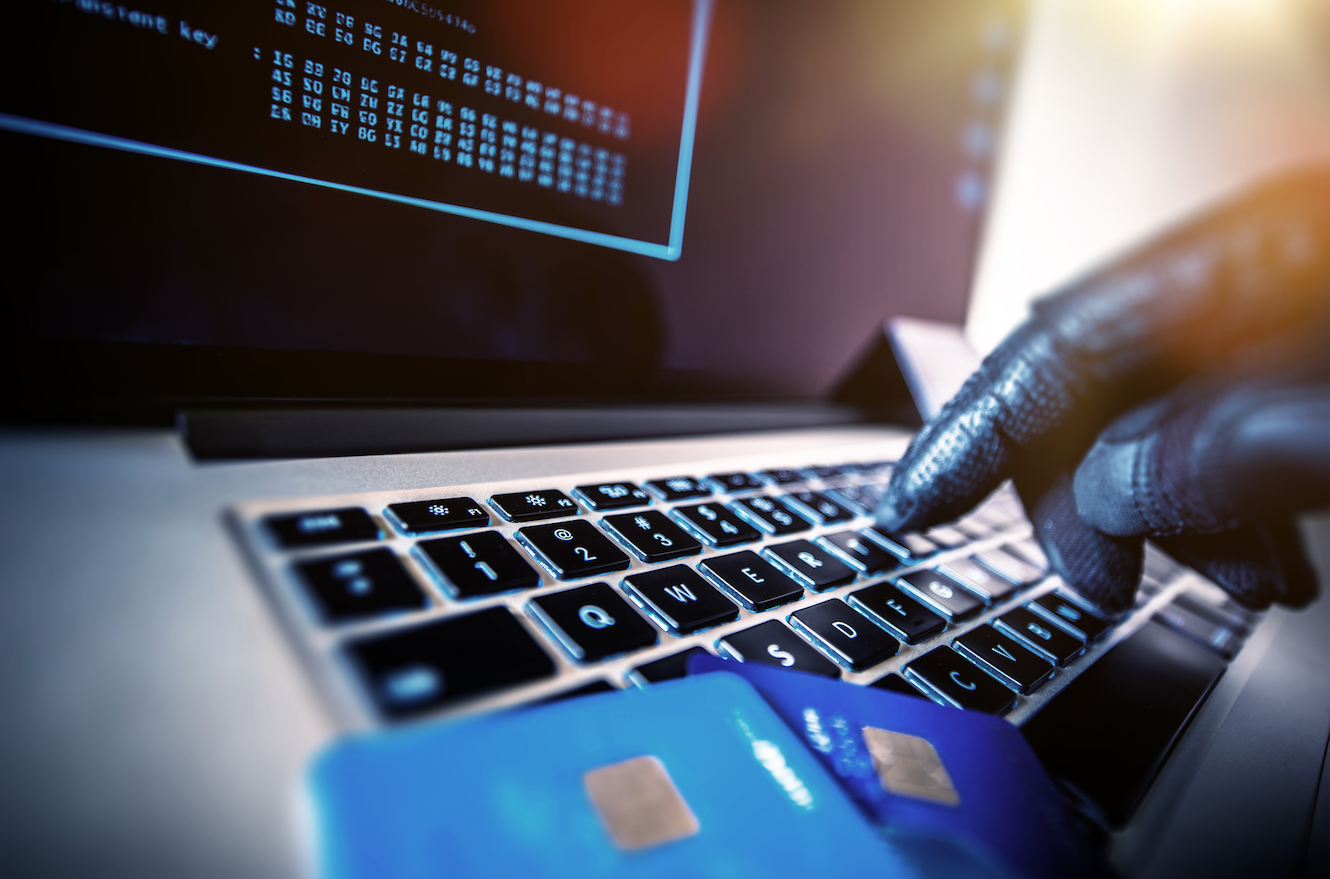“Your card has been declined.” Those are words you never want to hear, especially when you know there should be sufficient funds in your account to cover the transaction. When you pull up your banking app and see a number of fraudulent charges leading to your overdrawn balance, your heart just sinks into your stomach.
According to the Federal Trade Commission, “Identity theft happens when someone uses your Social Security number or other personal information to open new accounts, make purchases or get a tax refund.” It might be an isolated case where information is stolen for just one credit card, or it might be a more in-depth case where someone has used your identity extensively for things like a mortgage, a car loan or even a collection of government benefits. Regardless of the circumstances, identity theft is a violation of your privacy that leaves you vulnerable to many potential problems.
In today’s world, it is highly likely that you or someone you know has been a victim at some point. According to the Identity Theft Resource Center, identity theft has been the No. 1 consumer complaint for 15 straight years and has affected at least 332,646 Americans in 2014 alone. A quick shout-out to my friends on social media brought in more than 20 stories of identity theft in less than an hour.
One of those 20 who responded was Jessica. She found out that her identity had been stolen during a trip to the emergency room when her social security number led to someone else’s name printing out on her ID band. She pulled her credit report when she got out of the hospital, only to discover that a thief had completely stolen her identity — credit cards, utilities, cellphone service, medical bills, all of it. A nightmare of police reports, paperwork, phone calls and constantly having to prove her own identity ensued. Jessica was a very young adult when her identity was stolen, and years later, she and her family are still dealing with the repercussions.
How Are identities Stolen
Identities are stolen using both low-tech methods like purse snatching or dumpster diving and high-tech techniques like skimming, phishing and employment scams. Skimming involves the use of a special storage device attached to ATMs or gas pumps that reads the magnetic strip on your card to steal your credit/debit card information. Phishing involves thieves pretending to be financial institutions, other companies or a person in need and sending you spam emails or pop-up messages to get you to reveal personal information.
ACCORDING TO THE FEDERAL TRADE COMMISSION, THERE ARE FOUR MAIN WAY S TO KEEP YOUR INFORMATION SECURE.
1. Know with whom you share your information.
Make sure you really know who is getting your personal or financial information, and don’t give this kind of information out over the phone, through the mail or over the internet unless you initiated the contact or are sure of with whom you are dealing.
2. Store and dispose of your information securely, especially your Social Security number.
Lock your financial documents and records in a safe place at home, and keep your wallet or purse in a secure place at work. Limit what you carry with you when you are out to only the identification, credit and debit cards you need, and leave your social security card at home. Shred any documents that contain personal information and are no longer needed. Before you get rid of a computer, wipe the hard drive and get rid of all the personal information it stores. Before you dispose of a mobile device, make sure to delete your personal information permanently and save or transfer necessary information to a new device.
3. Ask questions before deciding to share your personal information.
Keep your Social Security number secure and ask questions before deciding to share it. If your (or your child’s) SSN is requested, ask why it is needed, how it will be used, how they will protect it and what happens if you don’t share it.
4. Maintain appropriate security on your computers and other electronic devices.
Use security software including anti-virus, anti-spyware and a firewall. Don’t open files, click on links, or download programs sent via email by strangers. Before you send personal information over your laptop or smartphone on a public wireless network, make sure your information will be protected. Keep financial information on your laptop only when necessary. Don’t use an automatic login feature that saves your username and password, and always log off when you’re finished. That way, if your laptop is stolen, it will be harder for a thief to get at your personal information.


